Targeting Net Zero? You Need to Start With Product Design
If organizations want to become truly sustainable, they must place environmental and social impact at the core of their product design processes.
When designing a new car, an automotive company will typically have just one stakeholder in mind: the driver. The problem with focusing solely on the consumer is that it can have unintended negative effects for a host of other stakeholders, as well as the environment.
Product emissions can account for a considerable share of an organization’s overall carbon footprint. Reducing the negative effects of products on the planet requires companies to go back to the drawing board, as around 80% of environmental impacts linked to products are the result of decisions made at the design stage1. This means that if a company is serious about targeting net zero, it must embed sustainability in its product design.
A life cycle of emissions
More than two-thirds of the global economy is covered by net-zero pledges2, but many organizations fail to consider the full spectrum of their emissions. Typically, they neglect the fact that product emissions are generated throughout a product’s life cycle—from raw materials sourcing to end-of-life treatment—and not just during the customer use phase. For example, according to the UN, more than half of greenhouse gas (GHG) emissions and 90% of biodiversity loss are attributed to the extraction and processing of primary raw materials3.
Using the example of the automotive company, for it to have any hope of reaching net zero, it needs to reduce emissions linked to auto parts suppliers, the dismantling and recycling of vehicles—and everything that happens in between.
However, environmental impact remains a design afterthought for most companies: In a recent study by Capgemini, only 22% of senior product design and engineering executives said that sustainability is a key component of their product design processes, and 14% have no plans to embed environmental concerns into the design phase.
Understanding sustainable product design
Sustainable design aims to maximize a product’s environmental, social and economic benefits and minimize its social and environmental costs. This approach considers a product’s entire life cycle in all decisions regarding research and development (R&D), design and engineering. And its focus on renewable energy and materials is aligned with the circular economy.
At every stage of a product’s life cycle, its negative environmental impact can be reduced through design. Sustainable design helps build supply chain resilience and reduces reliance on virgin materials, which can have a substantial impact. For example, the use of recycled aluminum saves 97% of the GHG emissions generated in the primary production process4.
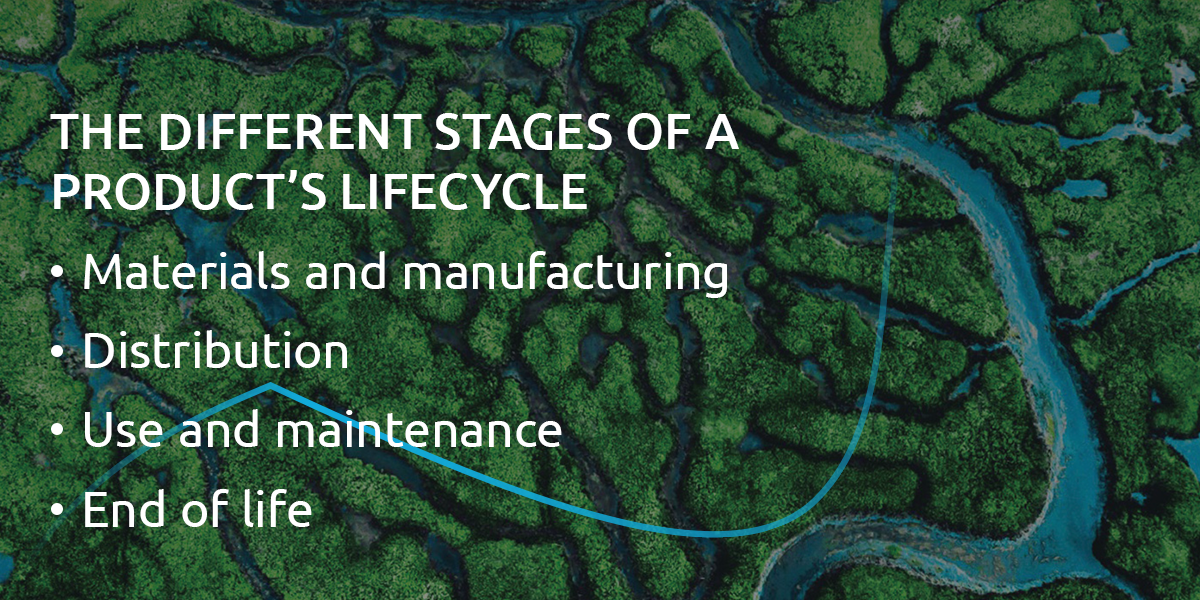
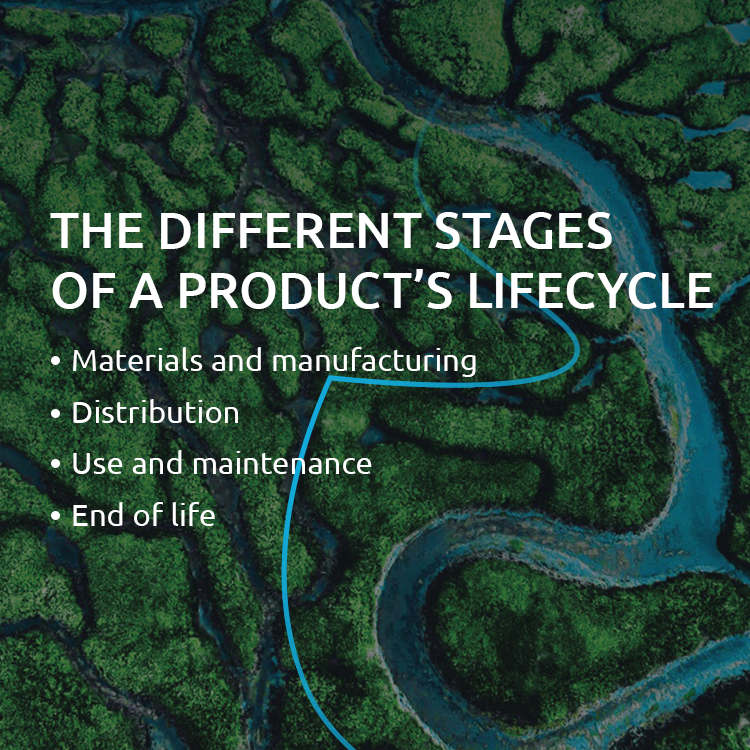
Unfortunately, only a handful of organizations consider the entire product life cycle in their designs. And when sustainable design strategies are implemented, many organizations tend to focus on the manufacturing and use stages, while end-of-life management is largely ignored. For example, according to Capgemini’s study, 33% of companies design for easy repairs, but only 16% consider a product’s recyclability or opportunities for circularity in the design process.
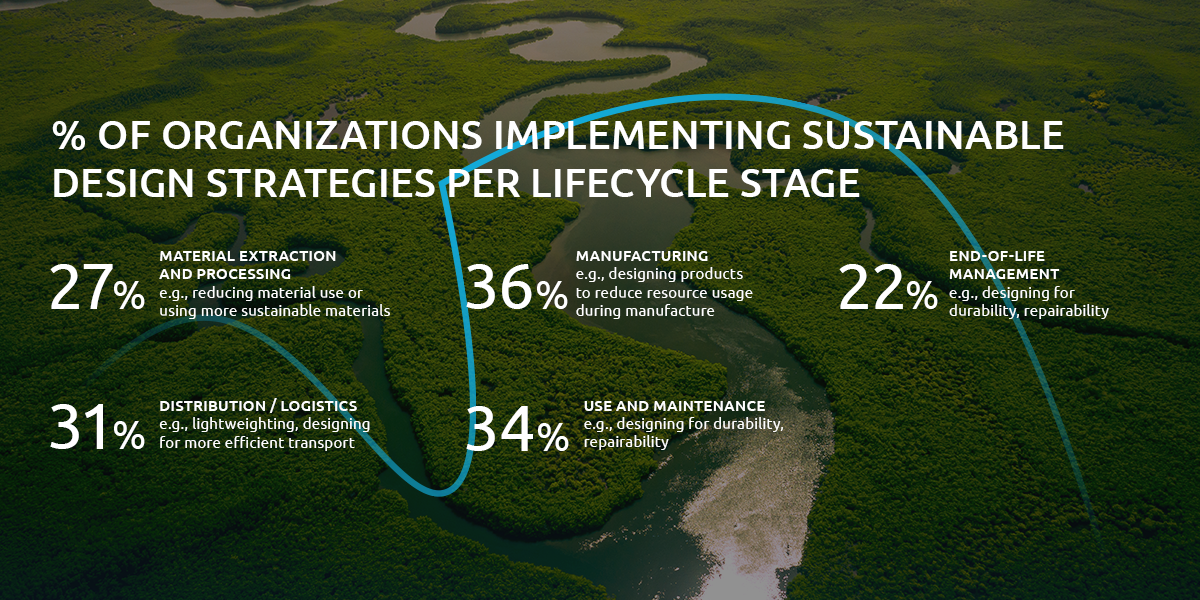
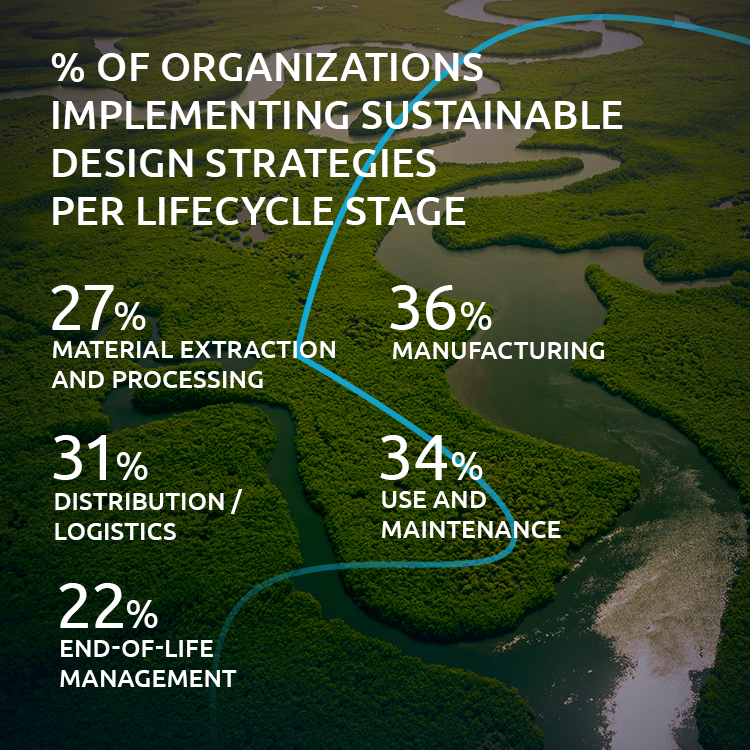
A fear of costs holds companies back
Several factors can discourage organizations from pursuing sustainable design, and cost is a major concern. But while some companies have experienced increased product costs, 60% report no change or a cost decrease since adopting sustainable product design principles. For example, 35% of apparel, footwear and accessories companies have seen a reduction in expenses thanks to sustainable product design.
The perception that the sustainable approach is expensive fails to consider that sustainably designed products use less resources over their life cycle through reduced material, manufacturing, distribution and consumer use costs. A prime example is furniture company IKEA, which is known for flat and densely packed products that fit easily in shipping containers and trucks and on shelves. This reduces emissions linked to transport, electrical use and other operational processes.
Cost increases can also be outweighed in the long term, through, for example, lower material expenses due to lightweighting; business benefits such as customer satisfaction; and a reduction in costs due to increased resilience to future environmental risks.
Other roadblocks on the route to sustainable design are companies’ limited sustainable design awareness and skills. There is a severe lack of data, with only about a quarter of organizations conducting regular environmental and social impact assessments of their products and more than half (54%) saying they lack data on the environmental and social impacts of their products. Companies also fall short on circular design and systems planning, and almost half (48%) lack skilled talent in sustainable product design.

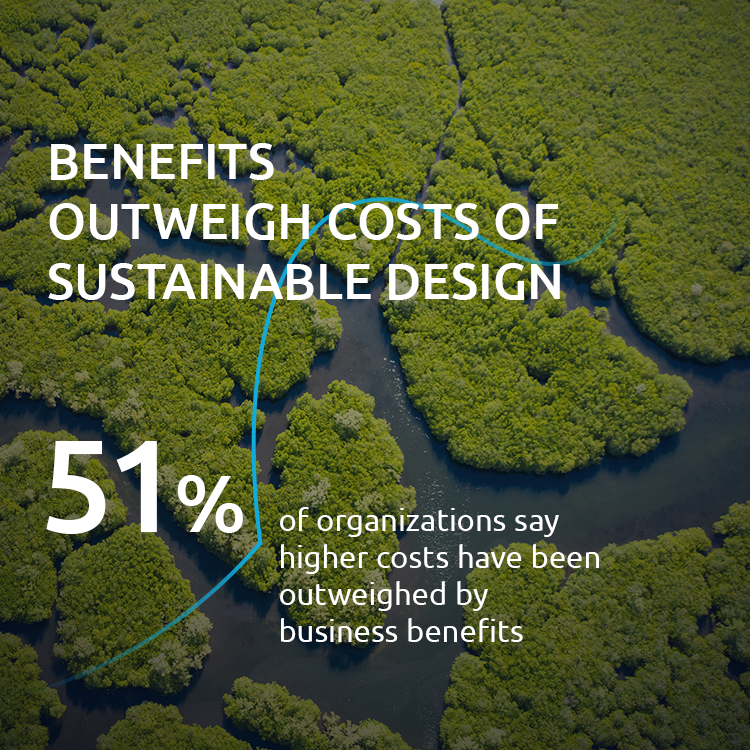
Three steps to making sustainable products
To design and deliver truly sustainable products, organizations need to take three key actions to establish a company-wide commitment to sustainability.
First, they should make sustainability a core design priority, and emphasize the need for systems change. This means defining clear sustainability goals and objectives for product design teams; establishing accountability by defining leadership roles, metrics and incentives; using data to measure impact; providing guidelines and tools; and investing in upskilling teams.
Second, they need to establish sustainably focused processes and partnerships across the product value chain. This will enable organizations to make sustainable design decisions based on both impact and feasibility; build new competencies; and invest in services that enable a shift to a circular economy. This includes the use of intelligent products and services to capture and analyze data and share insights; these drive sustainability by better measuring waste and identifying opportunities to save energy, resources and water, reduce emissions and optimize circular life-cycle management. Shifting to as-a-service models, also known as “servitization”, further promotes sustainability by discouraging sole ownership, thus reducing the number of products that that are created, used and disposed of.
Finally, companies should manage costs by reevaluating strategies and taking a long-term view on the benefits of investment in sustainable product design. By incorporating data and holistic metrics—including resource usage and GHG emissions as well as social justice factors—they can identify the real costs of their products, beyond raw materials and labor. Organizations should also educate consumers on sustainable choices and behaviors, and make investments in infrastructure that supports sustainable action.
Be quick to adopt a new way of thinking
There is no net zero without sustainable product design. Across industries, there is an urgent need to adopt processes that consider the entire life cycle of products, using data and insights to identify problem areas and new opportunities.
For organizations, this demands a completely different way of thinking that must be supported by new skills, new ways of working—both within a company and with external partners—and a new approach to costs. But the potential benefits are substantial—for profit, people and planet.
